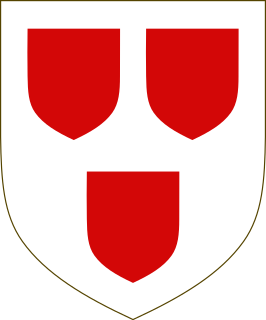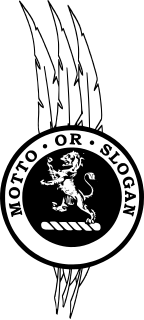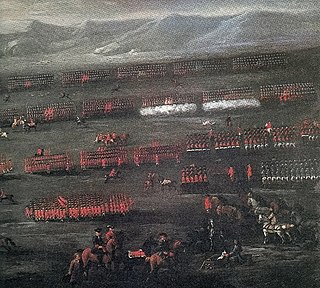
Clan MacNeil, also known in Scotland as Clan Niall, is a highland Scottish clan of Irish origin. According to their early genealogies and some sources they're descended from Eógan mac Néill and Niall of the nine hostages. The clan is particularly associated with the Outer Hebridean island of Barra, The early history of Clan MacNeil is obscure, however despite this the clan claims to descend from the legendary Irish King Niall of the Nine Hostages. The clan itself takes its name from a Niall who lived in the 13th or early 14th century, and who belonged to the same dynastic family of Cowal and Knapdale as the ancestors of the Lamonts, MacEwens of Otter, Maclachlans, and the MacSweens. While the clan is centred in Barra in the Outer Hebrides, there is a branch of the clan in Argyll (McNeill/MacNeill) that some historians have speculated was more senior in line, or possibly even unrelated. However, according to Scots law the current chief of Clan Macneil is the chief of all MacNeil(l)s.

Clan Nicolson is a Lowland Scottish clan. The clan claims descent from an Edinburgh lawyer who lived in the 16th century and from a distinguished line of Aberdeen merchants who preceded him. During the mid-1980s David Nicolson, 4th Baron Carnock was recognised by the Lord Lyon King of Arms as the chief of Clan Nicolson. Around the same time, a Nicolson who claimed descent from the Highland clan of "Nicolsons" historically centred on Skye, petitioned the Lord Lyon King of Arms to be recognised as chief of his own clan. The Lord Lyon King of Arms accepted this man's petition on the condition he took the surname MacNeacail. In consequence there are two Scottish clans with similar names—the lowland Clan Nicolson and the highland Clan MacNeacail.

Clan Hay is a Scottish clan of the Grampian region of Scotland that has played an important part in the history and politics of the country. Members of the clan are to be found in most parts of Scotland and in many other parts of the world. However, the North East of Scotland, i.e. Aberdeenshire (historic), Banffshire, Morayshire and Nairnshire Nairn (boundaries), is the heart of Hay country with other significant concentrations of Hays being found in Perthshire, especially around Perth, in the Scottish Borders, and in Shetland.

Heraldry in Scotland, while broadly similar to that practised in England and elsewhere in western Europe, has its own distinctive features. Its heraldic executive is separate from that of the rest of the United Kingdom.

Clan Arthur or Clan MacArthur, is a highland Scottish clan that once held lands on the shores of Loch Awe opposite Inishail. The clan has been described as one of the oldest clans in Argyll. Clan Arthur and Clan Campbell share a common origin, and at one point the MacArthurs challenged the seniority of the leading Campbell family. A branch of MacArthurs from the Isle of Skye were a sept of the MacDonalds of Sleat, and were hereditary pipers for the MacDonalds of the Isles. In late 18th century the chief of the clan died without an heir, leaving the clan leaderless until the late 20th century. In 2002, the first chief of Clan Arthur was recognised in about 230 years.

The Scottish Gaelic word clann means children. In early times, and possibly even today, Scottish clan members believed themselves to descend from a common ancestor, the founder of the clan, after whom the clan is named. The clan chief is the representative of this founder, and represents the clan. In the Scottish clan system, a chief is greater than a chieftain (ceann-cinnidh), a designation applied to heads of branches of a clan. Scottish clans that no longer have a clan chief are referred to as armigerous clans.

Clan Galbraith is a Scottish clan. The clan does not have a chief recognised by the Lord Lyon King of Arms. Because of this, the clan is considered an armigerous clan, and as such Clan Galbraith has no standing under Scots Law. The clan-name of Galbraith is of Gaelic origin, however its meaning denotes the bearer as of British origin, as opposed to Gaelic. The early Galbraiths were centred in the Lennox district, which spans the Highland and Lowland border of Scotland. The 17th chief of the clan brought ruin to the clan in the late 16th and early 17th century, and eventually lost his lands and fled Scotland for Ireland. His grandson, the 19th chief, was the last chief of Clan Galbraith.

Sauchie is a town in the Central Lowlands of Scotland. It lies north of the River Forth and south of the Ochil Hills, within the council area of Clackmannanshire. Sauchie has a population of around 6000 and is located one mile northeast of Alloa and two miles east-southeast of Tullibody.

Clan MacIver or Clan MacIvor, also known as Clan Iver, is a Scottish clan recognised by the Lord Lyon King of Arms. The clan, however, does not have a chief recognised by the Lord Lyon King of Arms. Because of this the clan can be considered an armigerous clan. The clan name of MacIver is of Gaelic origin, derived from an Old Norse personal name. Various forms of the surname MacIver, like MacGiver, are considered sept names of several historically large Scottish clans, such as clans Campbell and Mackenzie. There exists a Clan Iver society in Fife, Scotland.

Clan Wood is a Lowland Scottish clan from North Esk, Largo Bay and Angus in Scotland.

A Scottish crest badge is a heraldic badge worn to show allegiance to an individual or membership in a specific Scottish clan. Crest badges are commonly called clan crests, but this is a misnomer; there is no such thing as a collective clan crest, just as there is no such thing as a clan coat of arms.

A clan badge, sometimes called a plant badge, is a badge or emblem, usually a sprig of a specific plant, that is used to identify a member of a particular Scottish clan. They are usually worn in a bonnet behind the Scottish crest badge, or attached at the shoulder of a lady's tartan sash. According to popular lore clan badges were used by Scottish clans as a means of identification in battle. An authentic example of plants being used in this way were the sprigs of oats used by troops under the command of Montrose during the sack of Aberdeen. Similar items are known to have been used by military forces in Scotland, like paper, or the "White Cockade" of the Jacobites.

Clan McCorquodale is a Scottish clan, recognised by the Lord Lyon King of Arms, though without a chief so recognised. The last chief of the clan died in the 18th century. Because the clan does not have a recognised chief, it is considered an armigerous clan, and has no legal standing under Scots Law. Historically, the clan inhabited lands west of Loch Awe, in Argyll. These clan lands were centred at Loch Tromlee, where an island castle served as the clan seat. The line of Clan McCorquodale chiefs, first recorded in the 15th century, has been untraced since the 18th century.

Clan Ged is a Scottish clan. The clan does not currently have a chief recognised by the Lord Lyon King of Arms and is considered an armigerous clan. Without a recognised chief the clan has no standing under Scots Law. In Scotland, the surname Ged and Geddes may be derived from the place-name Geddes in Nairn. Another possibility is that it is derived from the Old English gedda, a nickname meaning pike.

Clan Kinninmont is a Scottish clan. The clan does not have a chief recognised by the Lord Lyon King of Arms, therefore the clan has no standing under Scots Law. Clan Kinninmont is considered an armigerous clan, meaning that it is considered to have had at one time a chief who possessed the chiefly arms, however no one at present is in possession of such arms. The original chiefly line died out when an heiress married into another family.

Clan Walkinshaw is a Scottish clan. It does not have a chief recognised by the Lord Lyon King of Arms therefore the clan has no standing under Scots Law. Clan Walkinshaw is considered an armigerous clan, meaning that it is considered to have had at one time a chief who possessed the chiefly arms, however no one at present is in possession of such arms.

Clan Bethune is a Lowland Scottish clan. The clan does not currently have a clan chief recognized by the Lord Lyon King of Arms and therefore it is considered an armigerous clan. It is a branch of the noble House of Bethune.

Clan Carruthers is a Lowland Scottish clan of the Scottish Borders headed by their Chief, Simon Peter Carruthers of Holmains and is recognised as such by the Lord Lyon King of Arms.

Sir John Shaw, 3rd Baronet of Greenock was a Scottish Whig politician who sat in the House of Commons between 1708 and 1734. He was instrumental in the construction of Greenock Harbour, and took part in actions against the Jacobite risings.

Clan MacPhail or the Sons of Paul is a Scottish clan of the Scottish Highlands. Known in Scottish Gaelic as Conchie Dhu or Condochy Doye, the clan is mainly associated with the confederation of Clan Chattan.




















